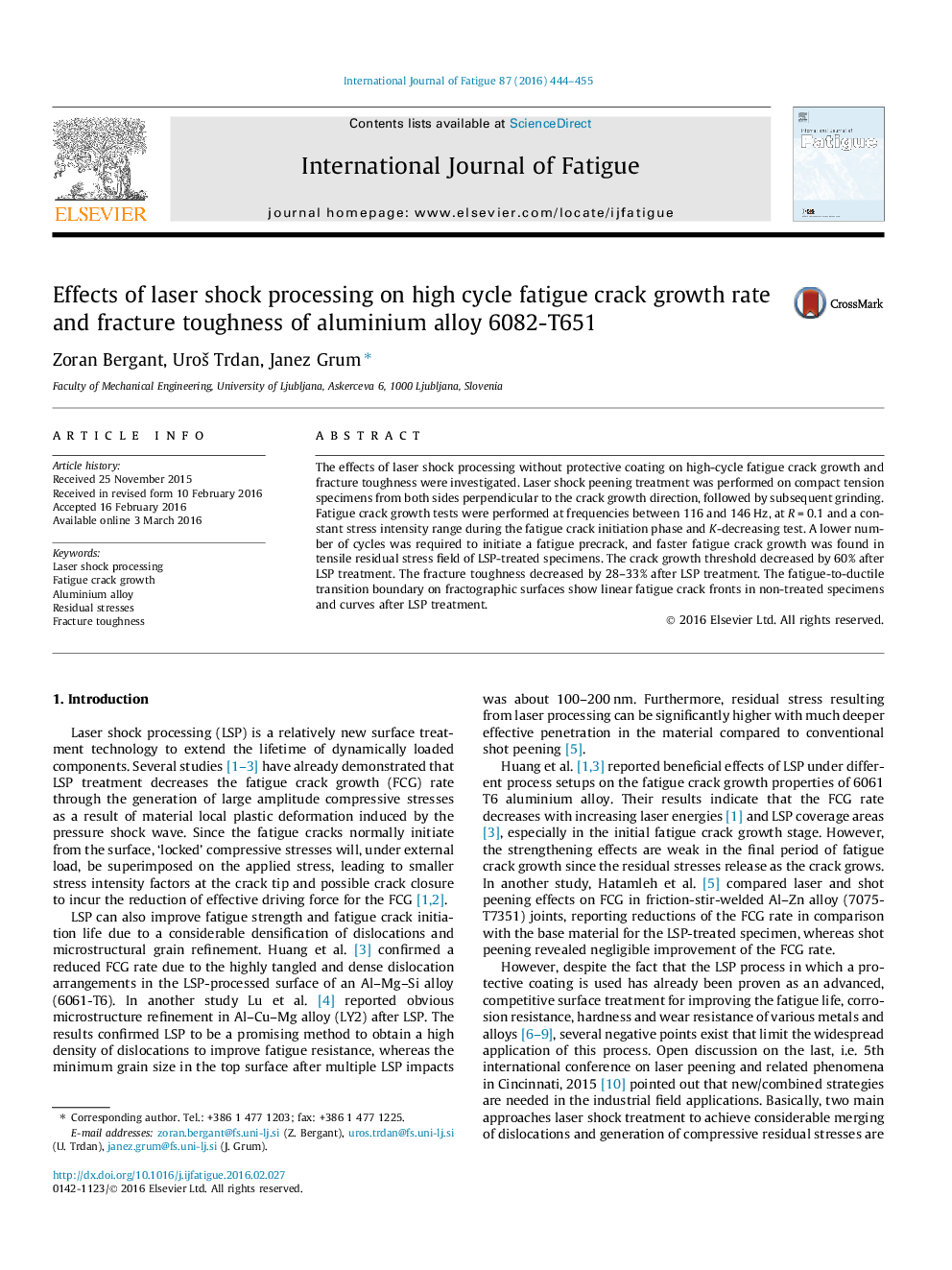| Article ID | Journal | Published Year | Pages | File Type |
|---|---|---|---|---|
| 778111 | International Journal of Fatigue | 2016 | 12 Pages |
•Fatigue crack growth rate increased significantly after laser shock processing.•Fracture toughness decreased by 28–33% after laser shock processing.•The tensile residual stresses in the core promotes to faster fatigue crack growth.•The compressive residual stresses at the surface have not retarded the crack growth.•Crack propagates faster in the middle of central tension specimen than at the edge.
The effects of laser shock processing without protective coating on high-cycle fatigue crack growth and fracture toughness were investigated. Laser shock peening treatment was performed on compact tension specimens from both sides perpendicular to the crack growth direction, followed by subsequent grinding. Fatigue crack growth tests were performed at frequencies between 116 and 146 Hz, at R = 0.1 and a constant stress intensity range during the fatigue crack initiation phase and K-decreasing test. A lower number of cycles was required to initiate a fatigue precrack, and faster fatigue crack growth was found in tensile residual stress field of LSP-treated specimens. The crack growth threshold decreased by 60% after LSP treatment. The fracture toughness decreased by 28–33% after LSP treatment. The fatigue-to-ductile transition boundary on fractographic surfaces show linear fatigue crack fronts in non-treated specimens and curves after LSP treatment.
